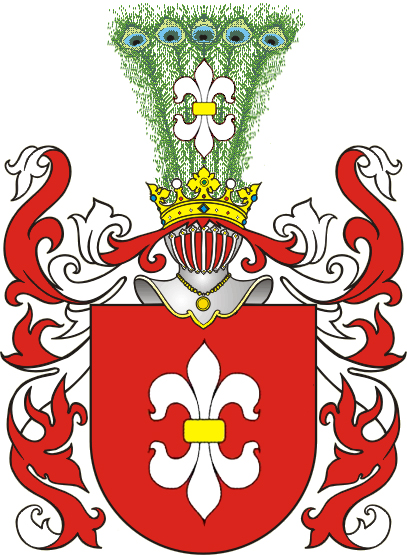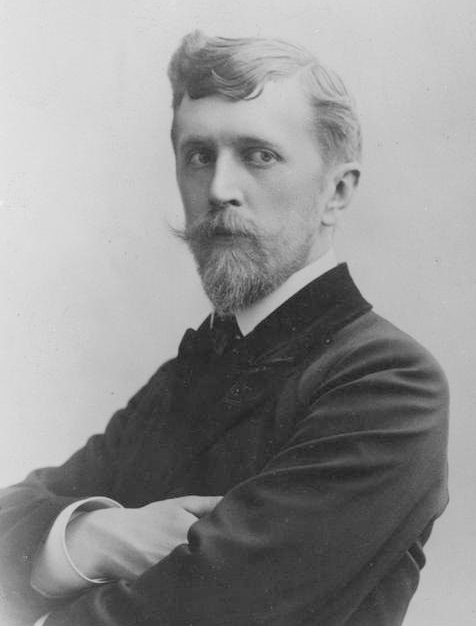|
Lis Coat Of Arms
Lis ( Polish for " Fox") is a Polish coat of arms. It was used by many noble families of Clan Lis. The legend of the coat of arms In 1058 Duke Casimir I the Restorer while chasing the pagan Lithuanians and Yotvingians who devastated Polish lands, came to Sochaczew. He sent a knight of the Lis Clan (''Fox Clan'') to scout the region for enemies. When the knight came across a river he met a strong enemy unit. Unable to attack them alone, he decided immediately to shoot a lighted arrow into the air to call for reinforcements. Help arrived soon and defeated the enemies. A grateful Casimir granted the brave knight a new coat of arms with an arrow in the escutcheon and his former sign - the fox - was placed in the crest. Notable bearers Notable bearers of this coat of arms have included: *Krystyn z Kozichgłów *Jaksa z Targowiska *Mikołaj z Kozłowa *Ferdynand Antoni Ossendowski * Stanisław Chomętowski * Sapieha Family ** Adam Stefan Sapieha ** Aleksander Michał Sapieha * ... [...More Info...] [...Related Items...] OR: [Wikipedia] [Google] [Baidu] |
Sapieha Family
The House of Sapieha (; be, Сапега, ''Sapieha''; lt, Sapiega) is a Polish-Lithuanian noble and magnate family of Lithuanian and Ruthenian origin,Энцыклапедыя ВКЛ. Т.2, арт. "Сапегі" descending from the medieval boyars of Smolensk and Polotsk. Vernadsky, George. ''A History of Russia''. New Haven. Connecticut: Yale University Press. 1961online/ref> The family acquired great influence and wealth in the Polish–Lithuanian Commonwealth during the 16th century. History The first confirmed records of the Sapieha family date back to the 15th century, when Semen Sopiha ( be, Сямён Сапега) was mentioned as a writer (scribe) of the then King of Poland and Grand Duke of Lithuania, Casimir IV Jagiellon ( pl, Kazimierz IV Jagiellończyk) for the period of 1441–49. Semen had two sons, Bohdan and Iwan. Possibly, the family of Semen Sopiha owned the village of Sopieszyno near Gdansk, which they left because of the Teutonic invasion. Sopiesz ... [...More Info...] [...Related Items...] OR: [Wikipedia] [Google] [Baidu] |
Jan Długosz
Jan Długosz (; 1 December 1415 – 19 May 1480), also known in Latin as Johannes Longinus, was a Polish priest, chronicler, diplomat, soldier, and secretary to Bishop Zbigniew Oleśnicki of Kraków. He is considered Poland's first historian.Isayevych, Ya. Jan Długosz (ДЛУГОШ ЯН)'. Encyclopedia of History of Ukraine. 2004 Life Jan Długosz is best known for his (''Annales seu cronici incliti regni Poloniae'') in 12 volumes and originally written in Latin, covering events in southeastern Europe, but also in Western Europe, from 965 to 1480, the year he died. Długosz combined features of Medieval chronicles with elements of humanistic historiography. For writing the history of the Kingdom of Poland, Długosz also used Ruthenian (Russian) chronicles including those that did not survive to our times (among which there could have been used the Kyiv collection of chronicles of the 11th century in the Przemysl's edition around 1100 and the Przemysl episcopal collecti ... [...More Info...] [...Related Items...] OR: [Wikipedia] [Google] [Baidu] |
List Of Polish Nobility Coats Of Arms
A ''list'' is any set of items in a row. List or lists may also refer to: People * List (surname) Organizations * List College, an undergraduate division of the Jewish Theological Seminary of America * SC Germania List, German rugby union club Other uses * Angle of list, the leaning to either port or starboard of a ship * List (information), an ordered collection of pieces of information ** List (abstract data type), a method to organize data in computer science * List on Sylt, previously called List, the northernmost village in Germany, on the island of Sylt * ''List'', an alternative term for ''roll'' in flight dynamics * To ''list'' a building, etc., in the UK it means to designate it a listed building that may not be altered without permission * Lists (jousting), the barriers used to designate the tournament area where medieval knights jousted * ''The Book of Lists'', an American series of books with unusual lists See also * The List (other) * Listing (di ... [...More Info...] [...Related Items...] OR: [Wikipedia] [Google] [Baidu] |
Heraldic Family
A heraldic clan (''ród herbowy''), in Poland, comprised all the noble (''szlachta'') bearers of the same coat of arms. The members of a heraldic clan were not necessarily linked by consanguinity. The concept was unique to Polish heraldry. History The Polish word ''herb'' derives from the German ''Erbe'', "inheritance" or "heritage", and denotes a coat of arms. Unrelated families could be granted the same coat of arms and thus become co-armigers sharing the same ''herb''. Bearers of the same coat of arms were variously called ''herbowni'', ''współherbowni'' (co-armorials), or ''klejnotni'', from ''klejnot'', "jewel". The numbers of such individual families often reached several dozen; several hundred were not uncommon. The heraldic-family tradition constitutes one of the hypotheses about the origins of the Polish nobility: the unique feature of Polish heraldry being the practice of inducting unrelated families into the same coat of arms, sometimes with minor variations of ... [...More Info...] [...Related Items...] OR: [Wikipedia] [Google] [Baidu] |
Ferdynand Ruszczyc
Ferdynand Ruszczyc (1870–1936) was Polish painter, printmaker, and stage designer. He was a member of the aristocratic Ruszczyc de Lis family. Biography Born in the village of Bohdanów (then Russian Empire, now Belarus), Ruszczyc spent his childhood in Minsk. He graduated from gymnasium in Minsk in 1890 with a gold medal. Ruszczyc originally studied law at the University of St. Petersburg, but later switched majors and began taking painting classes at the Imperial Academy of Arts. He was a student of the famous Russian landscape painters Ivan Shishkin and Arkhip Kuindzhi. Ruszczyc travelled to the Crimea to paint seascapes, and later to the Baltic islands and Sweden to paint northern landscapes. He visited Berlin, where he was significantly influenced by the Symbolist painters such as Arnold Bocklin. After graduation, Ruszczyc made extensive tours of Western Europe incorporating much of the styles he came across into his own art. Career Together with Kazimierz Stabrowski, X ... [...More Info...] [...Related Items...] OR: [Wikipedia] [Google] [Baidu] |
Henryk Samsonowicz
Henryk Bohdan Samsonowicz (23 January 1930 – 28 May 2021) was a Polish historian specializing in medieval Poland, prolific writer, and professor of the University of Warsaw. In 1989–1990, he was the minister of education in the government of prime minister Tadeusz Mazowiecki.Henryk Samsonowicz, biography at the webpage of Department of History of Warsaw University. ''Instytut Historyczny UW'', 15 June 2009. Life Samsonowicz graduated in 1950 from University of Warsaw, and 1954 he received a PhD, and in 1960 was . In 1971 Samsonowicz was named a |
Melchior Wańkowicz
Melchior Wańkowicz (10 January 1892 – 10 September 1974) was a Polish army officer, popular writer, political journalist and publisher. He is most famous for his reporting for the Polish Armed Forces in the West during World War II and writing a book about the battle of Monte Cassino. Biography Melchior Wańkowicz was born on 10 January 1892 in Kalużyce in the Minsk Governorate of the Russian Empire, now Kolyuzhitsa, Byerazino Raion, Minsk Region, Belarus. He attended school in Warsaw, then the Jagiellonian University in Kraków, which he graduated from in 1922. An activist in the Polish independence movement, he was an officer in the Riflemen Union (Związek Strzelecki). During the First World War he fought in the Polish I Corps in Russia under General Józef Dowbor-Muśnicki. After the war he worked as a journalist, for a time working as a chief of the press department in the Polish Ministry of Internal Affairs. In 1926 he founded a publishing agency, "Rój". He also work ... [...More Info...] [...Related Items...] OR: [Wikipedia] [Google] [Baidu] |
Szymon Rudnicki
Szymon Rudnicki (born 8 February 1938 in Wilno) is a Polish historian. He specializes in the history of the Second Polish Republic, right-wing political movements of that era, and Polish-Jewish relations. He lectured at the Institute of History of the University of Warsaw, from 1973 to 1987, he was its deputy director. In November 1996 he received a degree of professor. Rudnicki focuses mostly on the ideology and activities of Polish interwar right-wing movements. He also focuses on the Jewish question in Poland and Polish-Jewish relations in interwar Poland. His book ''Żydzi w parlamencie II Rzeczypospolitej'' (Jews in the Parliament of the Second Republic), published in 2003, won the KLIO Prize (Nagroda KLIO) in 2004 for the best scientific monography. at Culture.pl, 25 November ... [...More Info...] [...Related Items...] OR: [Wikipedia] [Google] [Baidu] |
Kazimierz Nestor Sapieha
Prince Kazimierz Nestor Sapieha (1757–1798) was a Polish- Lithuanian noble ( szlachcic) and one the creators of the 3 May Constitution. Biography Early life and career Kazimierz Sapieha was educated at the Knight School in Warsaw from 1767 until 1771, and later studied in Italy. Upon his return he served as Artillery General of Lithuania, from 1773 to 1793. As Deputy from Brzesc Litewski, he participated in several Sejms. Most notably, from 1790 he participated in the Four-Year Sejm in Warsaw, and became Sejm Marshal from 6 October 1788 until 29 May 1792, and Marshal of the Lithuanian Confederation. Politics An early supporter of the magnate opposition to any liberalization (his uncle Hetman Franciszek Ksawery Branicki was its leader), Sapieha changed his position under the influence of Stanisław Małachowski, and became a supporter of reforms, and the 3 May Constitution. He strongly protested, when King Stanisław August Poniatowski joined the Targowica Confederation, ... [...More Info...] [...Related Items...] OR: [Wikipedia] [Google] [Baidu] |
Lew Sapieha
Lew Sapieha ( lt, Leonas Sapiega; be, Леў Сапега or Lieŭ Sapieha; 4 April 1557 – 7 July 1633) was a nobleman and statesman of the Polish–Lithuanian Commonwealth. He became Great Secretary of the Grand Duchy of Lithuania in 1580, Great Clerk of the Grand Duchy in 1581, Crown Chancellor in 1585, Grand Chancellor from 1589 until 1623, Voivode of Vilnius in 1621, Great Lithuanian Hetman in 1623 and governor of Slonim, Brest and Mogilev. Sapieha is considered as a great political figure of the Commonwealth. A rich and powerful magnate, he was known for his wisdom as a statesman, lawyer and military commander, he was one of the greatest leaders of the Grand Duchy of Lithuania at the times of the Duchy's highest cultural flourishing. He was of Ruthenian ethnicity. Modern Belarusian sources interpret his Ruthenian heritage as Belarusian, however many facts presented by the modern Belarusian sources about the Grand Duchy of Lithuania are often distorted and unanimously ... [...More Info...] [...Related Items...] OR: [Wikipedia] [Google] [Baidu] |
Jan Kazimierz Sapieha The Elder
Jan Kazimierz Sapieha the Elder ( lt, Jonas Kazimieras Sapiega vyresnysis) (?–1730) was a Grand Hetman of Lithuania since 1708 to 1709. He was the son of Franciszek Stefan Sapieha, father of Piotr Paweł Sapieha and Paweł Sapieha. A supporter of Stanisław Leszczyński, he took part in many battles of the Great Northern War. Charles XII of Sweden considered him a good commander, and influenced his relative, Jan Kazimierz Sapieha the Younger, to pass the Grand Hetman post to him. He defeated Grzegorz Antoni Ogiński at the battle of Lachowce, but in 1709 after the Russian victory of Swedes at Battle of Poltava he surrendered to Augustus II the Strong and was forced to abandon his hetmanship. In 1716 he joined the anti- Saxon Tarnogród Confederation. In the last years of his life he became a supporter of the Russian Empire, in particular, of Catherine I of Russia, for which in 1726 he was rewarded with a rank of field marshal, and in 1727, Governor-General of Saint Peter ... [...More Info...] [...Related Items...] OR: [Wikipedia] [Google] [Baidu] |
.png)

